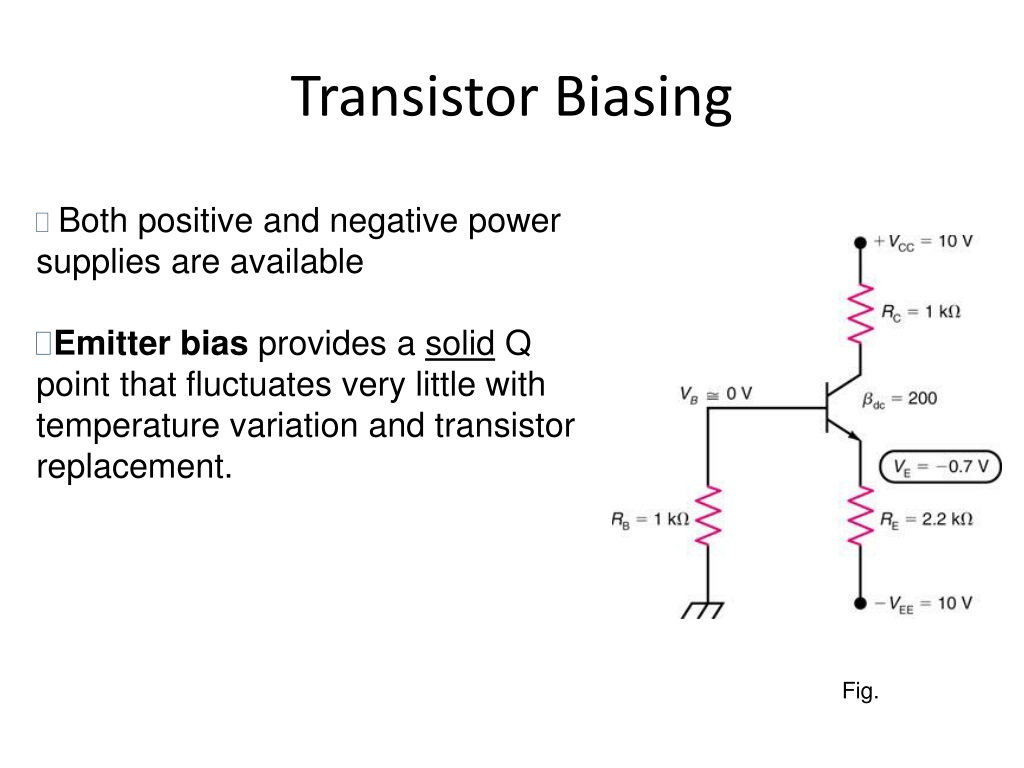
At 5 January 2015, 16:56:28 user sadusaisaandeep wrote:.Do you have a pdf/doc package with all the pages? I have some serious studying to do. Just went through your transistor theory pages. At 18 February 2015, 16:20:16 user lee smith wrote:.At 19 February 2015, 8:23:36 user Giorgos Lazaridis wrote: [reply Giorgos smith Sure.At 6 April 2015, 23:20:04 user Billy Keith wrote:.Would you please tell that why the mentioned curvature happens? I have this problem in my TFT (Thin Flim transistor) and in the low voltage of D-S, D-S current does not like a diode curve and it has a curvature like you mentioned.

I found this site yesterday and i think there is a lot information about diodes. To get more information about tunnel diode click hotlink.
#TRANSISTOR BIASING CALCULATOR PC#
Learn about the most popular PC Cooling methods.This means that the current through the voltage divider (I VD) must be at least 10 times greater than the base current. Let's assume that we choose to design a firm voltage divider. So now we can calculate the emitter current:įrom the voltage divider formula, we can now calculate the resistor ratio needed to get this voltage: V DD = V C + V CE + V E => V E = V DD - V C - V CE Now we can use the Kirchhoff's law to calculate the emitter voltage: We replace this formula to the gain amplification formula:Īv = R C / ( 25mV / I E ) => Av = I E x R C / 25mV = I C x R C / 25mV = V C / 25mV => V C = Av x 25mVįrom the above formula we can directly calculate the collector voltage V C. Let's remember the formula for the internal emitter resistor: So we must find a way to calculate the emitter voltage first. But we cannot calculate r' e since we do not know the emitter current. To calculate r i we must first calculate the emitter resistor r' e.

It can be proved that the voltage gain is calculate from this formula: Usually, we place the Q point in the middle of V CE. We can safely choose a large resistor such as 10 Kohms for R E. Therefore, we want to maintain the emitter current as low as possible. We know that the AC input must be able to provide enough current for the emitter and the collector circuit. The design can begin with the DC equivalent:įirst thing we can define with an educated guess is the R E resistor. A common base amplifier has no current amplification, therefore we only need to calculate the voltage amplification. Also, the designer must know the DC voltage that will be used for the transistor bias (V DD). The designer must know the input signal size (amplitude and frequency range) and the required amplification factor. The output is taken from the collector and the input signal is applied at the emitter. The amplifier is biased with Voltage Divider (R B1-R B2). The resistor Rg is the resistance of the AC signal generator.

There will be a lot of mathematical functions and equations that have to be solved to analyze the circuit, and therefore i made an on-line calculator. Here is a typical Common Base transistor amplifier schematic with an NPN transistor: We will not discuss much about this type of connection, since it is very rarely used. In this section we will discuss the design methodology for the three different transistor connections.Ĭommon Base Transistor Design MethodologyĪ common base amplifier is usually used as an input amplification stage for high frequency applications (small signal amplifier). But if someone wants to design an amplifier, the methodology is different. In the previous section we learned how can someone analyze a transistor circuit.


 0 kommentar(er)
0 kommentar(er)
